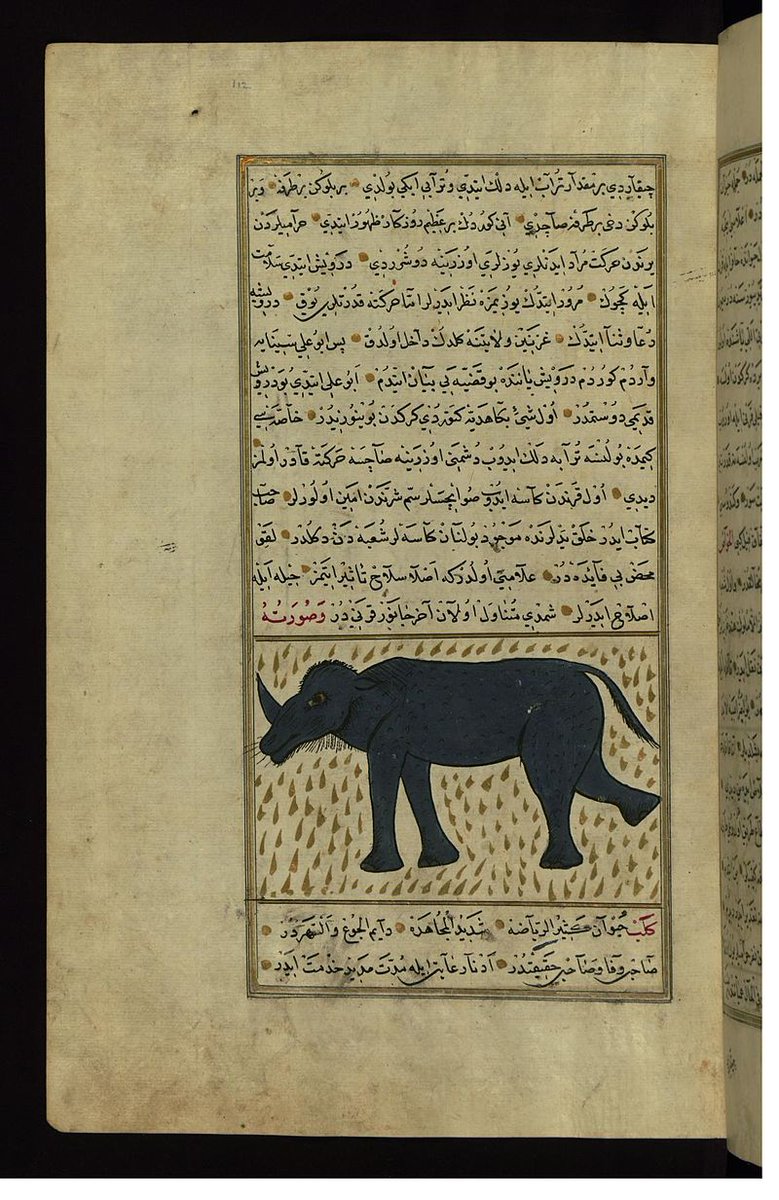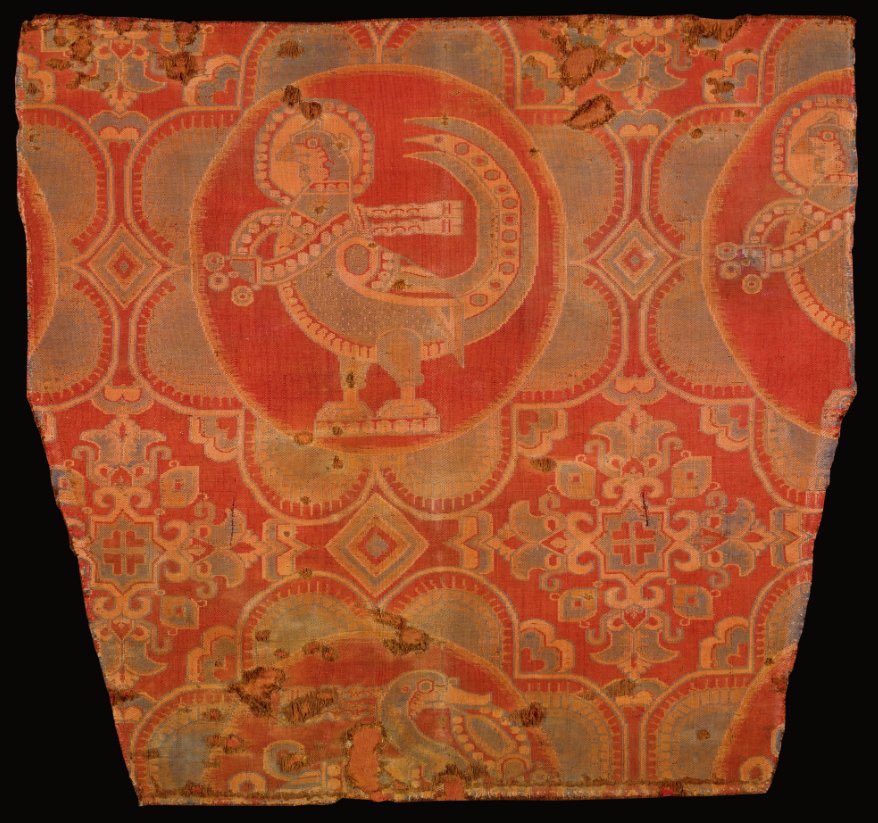
From the 10th-13th C Muslim geographers & chroniclers imagined a vast & beautiful world full of mythic beasts & legendary creatures. One part legendarium one part bestiary they compiled Pre-Islamic tales into an Islamic cosmos
A thread on mythic and legendary creatures @aaolomi
A thread on mythic and legendary creatures @aaolomi
While the early Muslims were familiar with the Rukh/Roc, a mighty eagle who could clutch elephants in its talons, they soon were introduced to the Simurgh. -AAO
With gorgeous plumes, the Simurgh was a favorite of Sufi literature. In Attar’s Conference of the Birds, the birds set out on a journey to find the wise Simurgh only to be brought before a pool where they see their own reflection. The twist is a play on the word simugh & 30 birds 

Similarly the Huma is another great bird, one that never lands and the sight of which brings joy.
The Chamrosh on the other hand is described as having the body of a dog and wings of an eagle -AAO
The Chamrosh on the other hand is described as having the body of a dog and wings of an eagle -AAO
Daval-pa is a monster that is old man from the top but has leather-like appendages for legs. Playing on the sympathies of its victim, it begs for a ride only to wrap its terrifying legs around the hapless human, forcing them into slavery -AAO
Karkadann is described as dark with scaly skin with either a curved horn or a long straight one. It’s horn is said to heal poisons. By some descriptions it seems, it was likely drawn from the Indian Rhinoceros. -AAO 

Another horned creature the island-dwelling, Al-mi'raj is depicted as a rabbit with a single horn.- AAO 

The human-eating Mardikhor from where we get Manticore from is a hybrid monster with a lions body and a human head. -AAO
But the most famous creatures are the jinn and pari. Many famous pre-Islamic creatures were reinterpreted as either jinn or pari- AAO
The pari were beautiful winged creatures akin to fairies. Originally drawn from the pre-Islamic Avestas, with the coming of Islam they were Islamized as goodly jinn, or semi-angelic being.
Slightly mischievous they were said to live on Mount Qaf.
Slightly mischievous they were said to live on Mount Qaf.

Mount Qaf also became the home of famous ancient jinn kings, figures who appeared in Pre-Islamic tales, but where now fit within an Islamic cosmology and geography. -AAO
The mighty Sorḵāb is king of the wicked jinn, a race of invisible fiery beings, who took on the shape of animals. Sorḵāb was said to wage war on the pari and deceive humans. -AAO
The Persian sang jabūk, a mischievous rock-hurling spirit, was also reimagined as a type of jinn. One that hid in the mountains and tricked caravans off their course.
Then there was Maḏhaba who in pre-Islamic lore was a sorceress, but was reinterpreted as a wicked jinni -AAO
Then there was Maḏhaba who in pre-Islamic lore was a sorceress, but was reinterpreted as a wicked jinni -AAO
The jinn and pari were often treated as two sides of the same coin, invisible beings that could be wicked or good, ugly or beautiful. -AAO
Authors like Zakariya al-Qazwini, Yakut, & al-Maqdisī & others wrote compendiums that Islamized local lore. The history of these creatures reveals to us the way in which Muslims fashioned their understanding of the world by incorporating and integrating pre-Islamic beliefs -AAO
• • •
Missing some Tweet in this thread? You can try to
force a refresh










